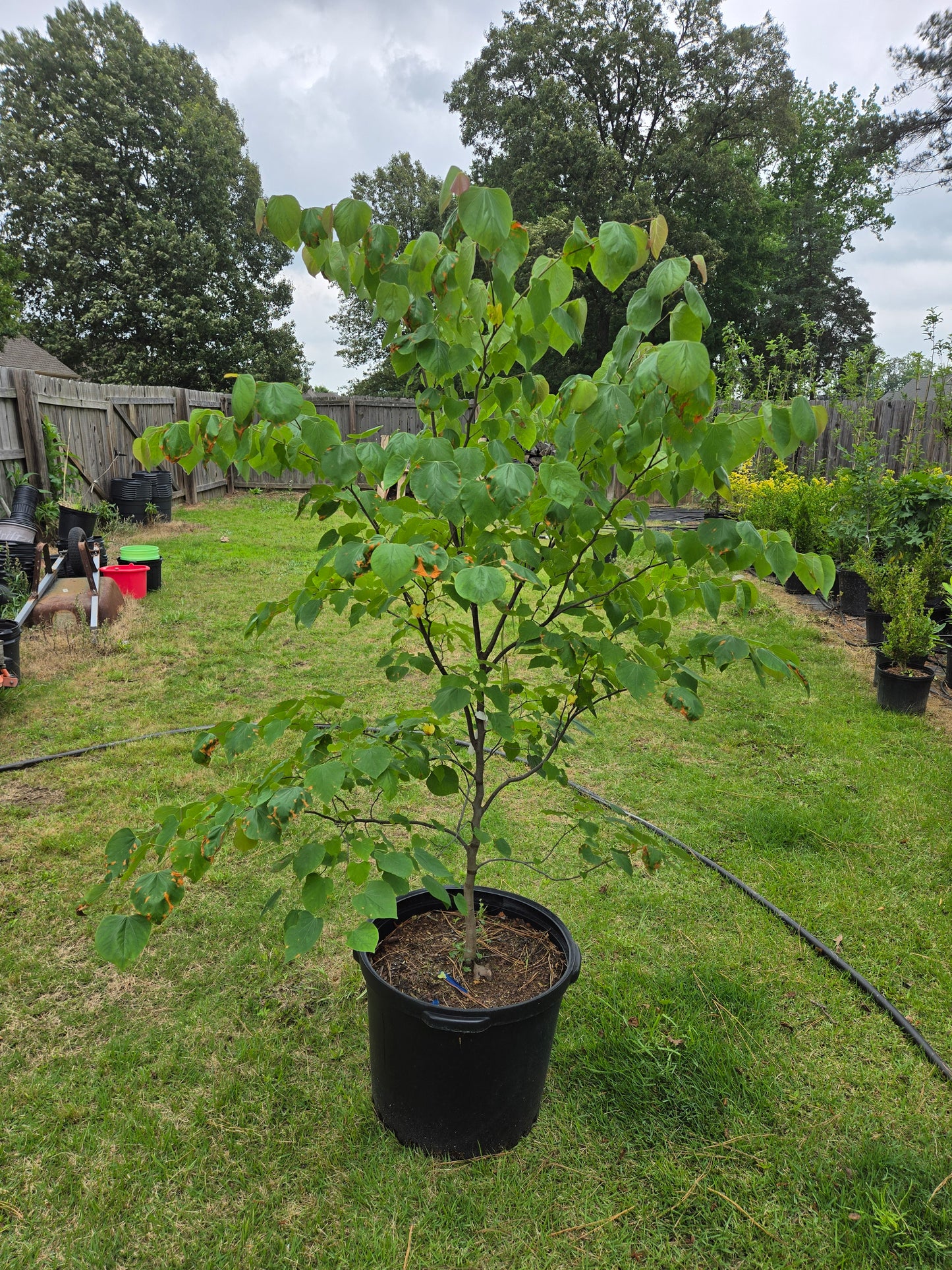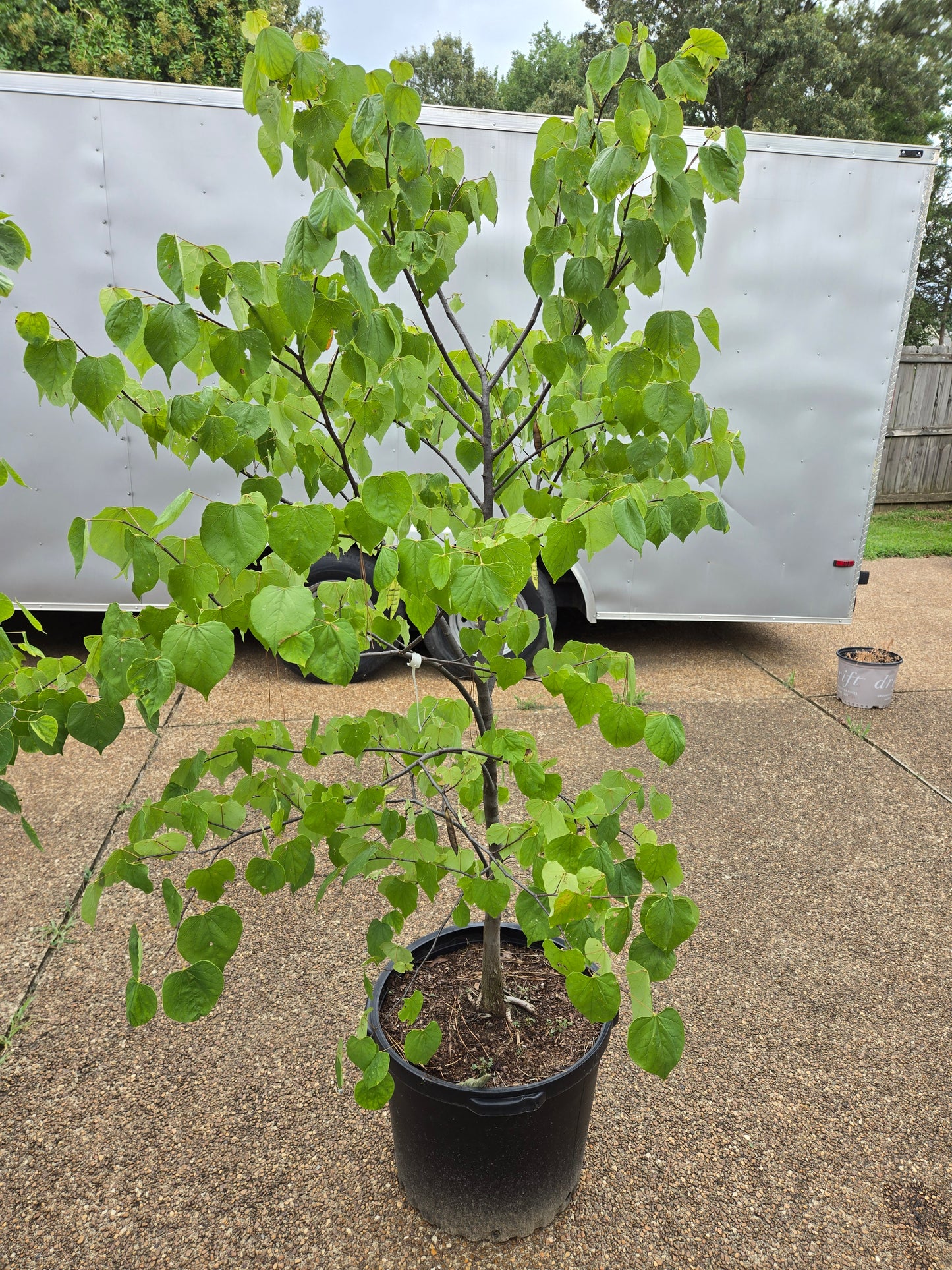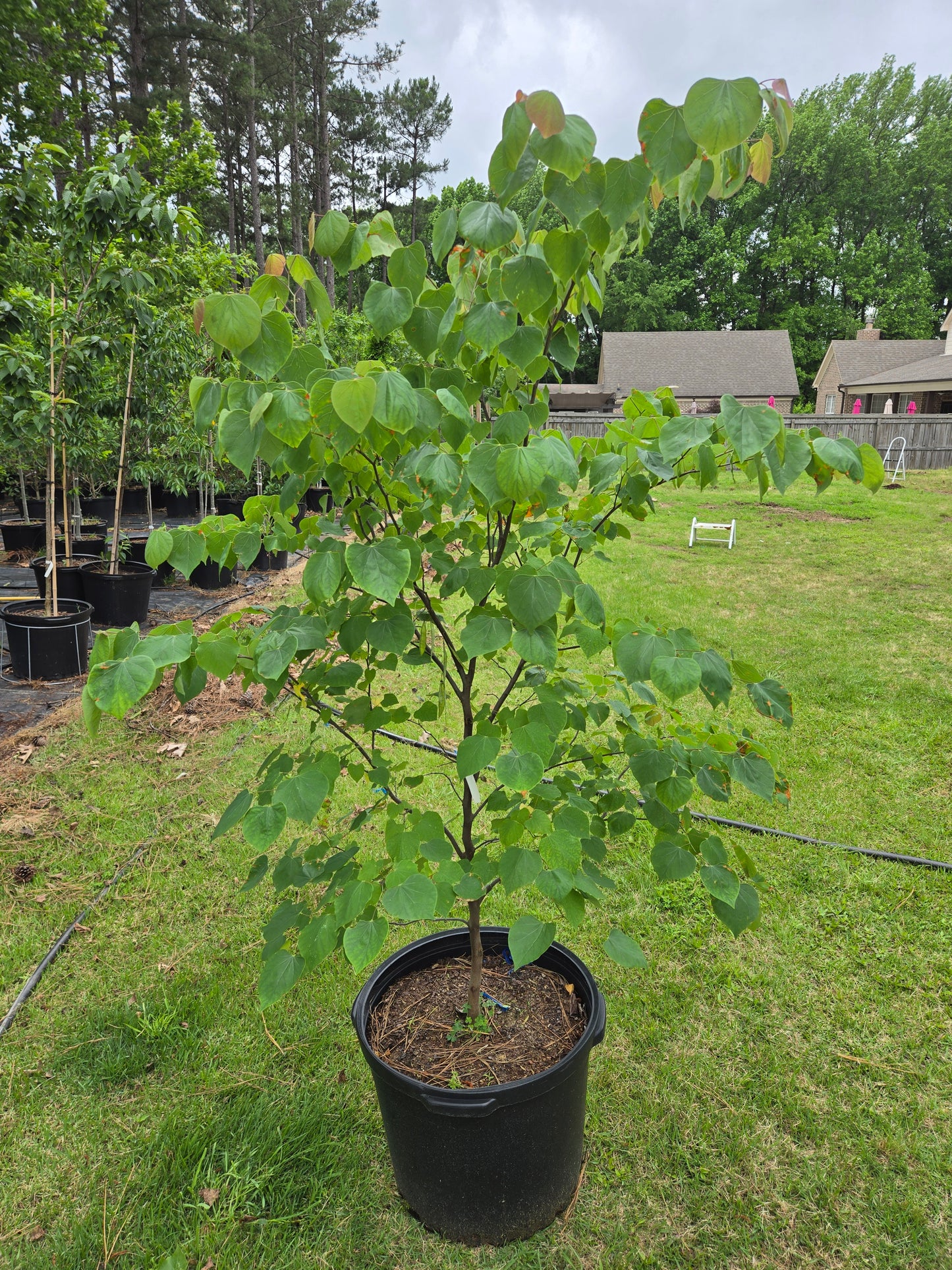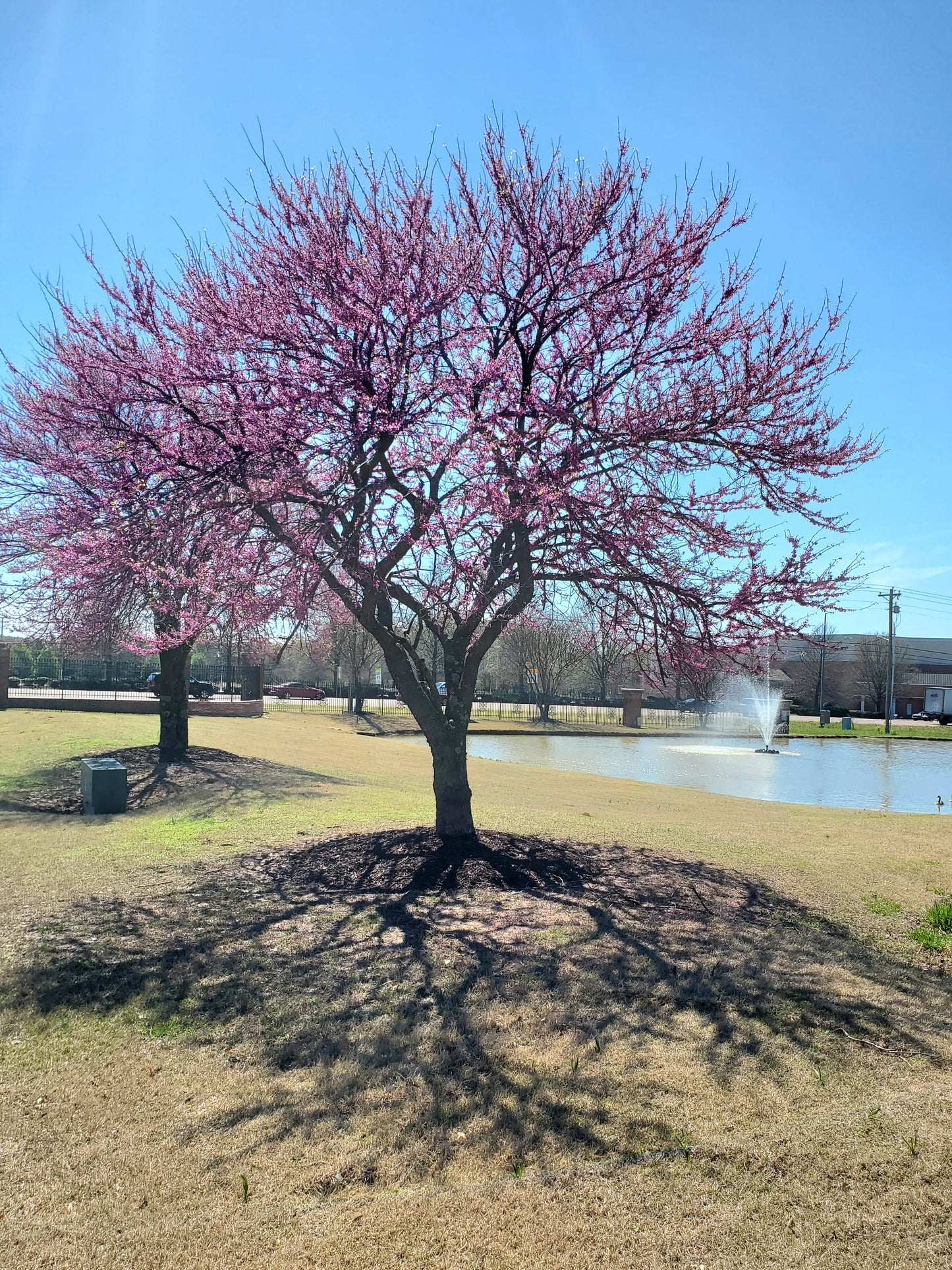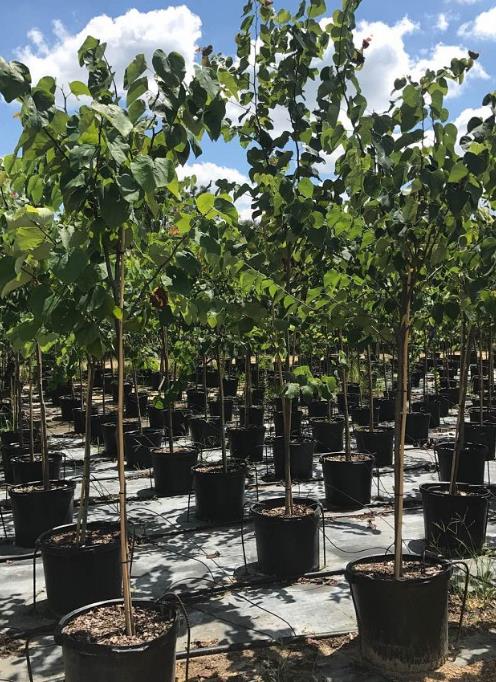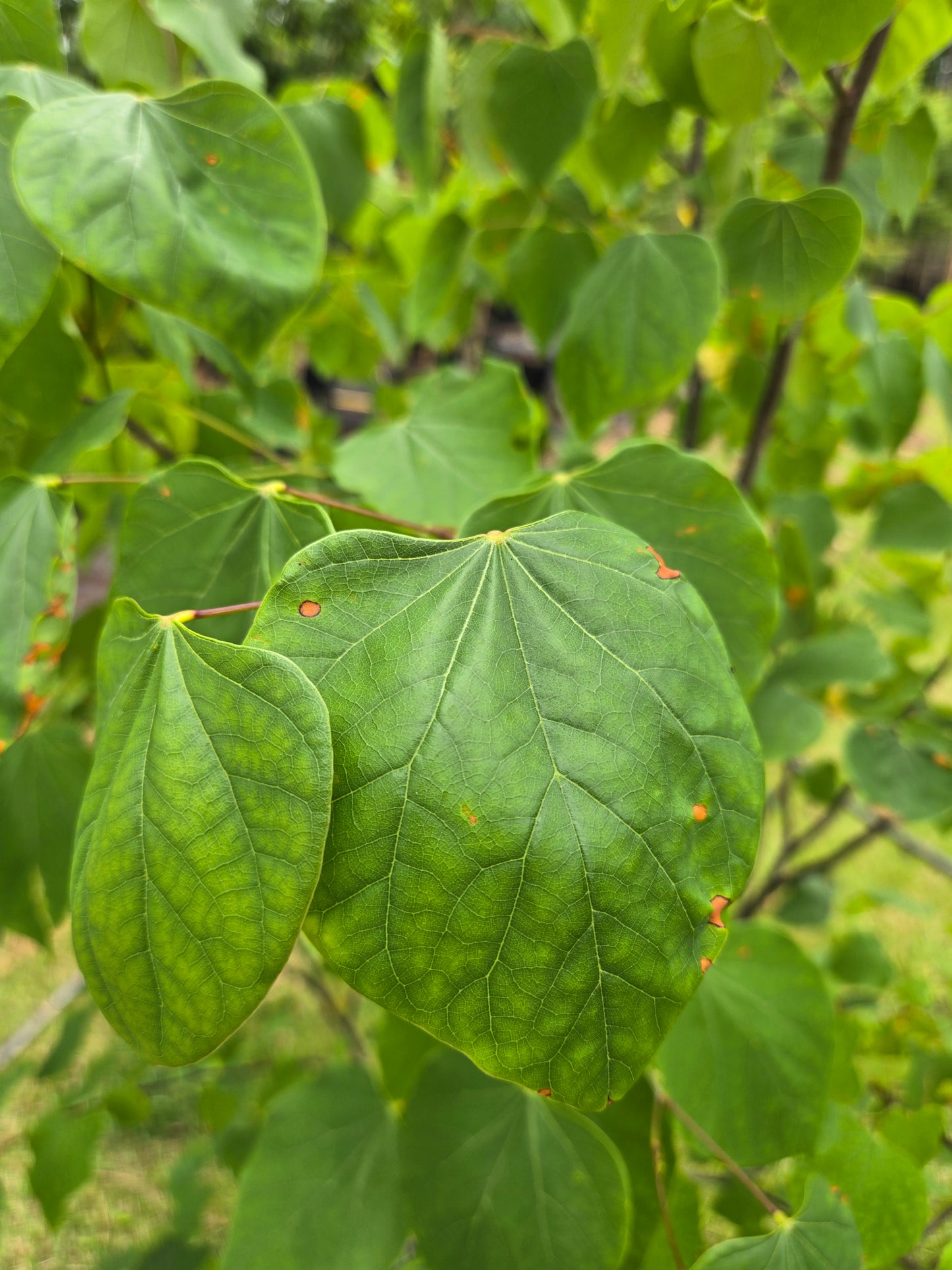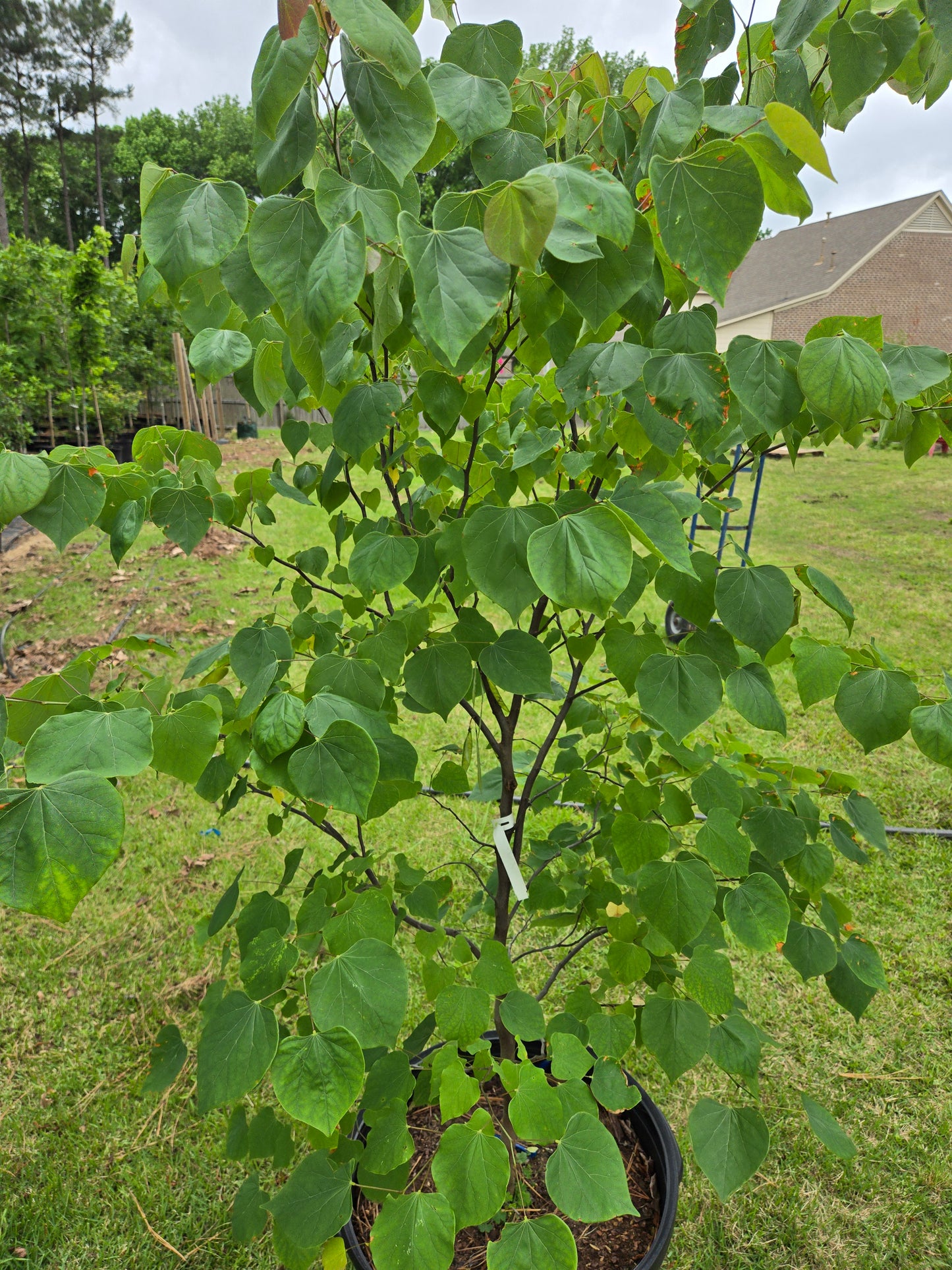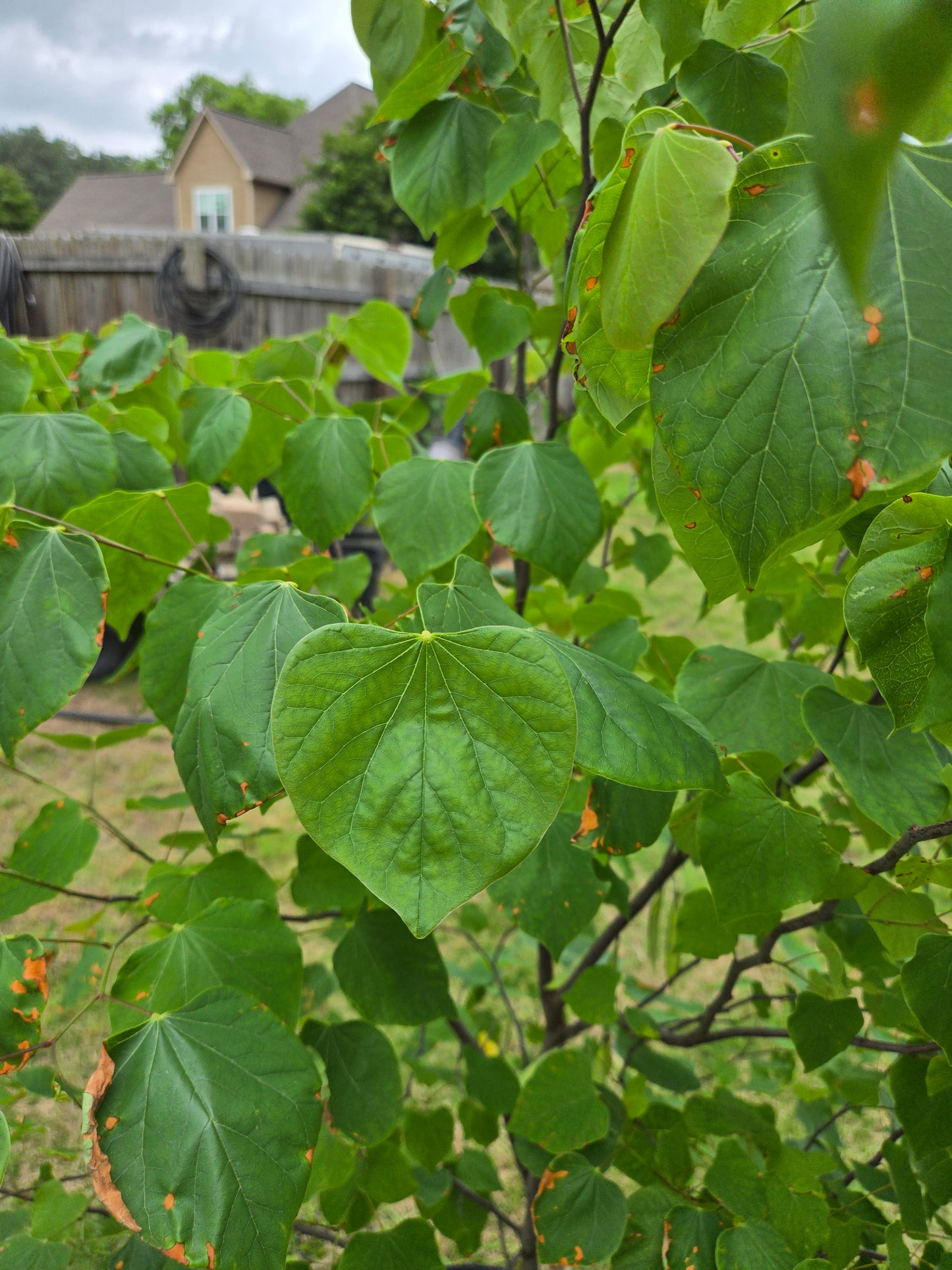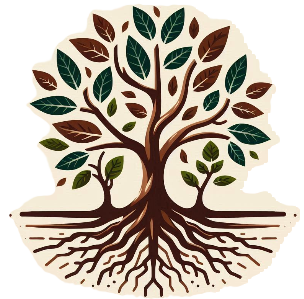ShadeTreesandShrubs.com
Eastern Redbud Cercis canadensis
Eastern Redbud Cercis canadensis
Couldn't load pickup availability
Why Plant an Eastern Redbud (Cercis canadensis)
Why Choose an Eastern Redbud?
The Eastern Redbud (Cercis canadensis) is a stunning native tree that brings beauty and ecological benefits to any landscape. Here are compelling reasons to plant one:
- Vibrant Spring Blooms: In early spring, the tree bursts into a profusion of pink to lavender flowers before its leaves emerge, creating a striking display.
- Attractive Foliage: Heart-shaped leaves turn from green to golden-yellow in fall, adding seasonal interest.
- Wildlife Support: Flowers attract pollinators like bees and butterflies, while seeds provide food for birds.
- Compact Size: Growing 20-30 feet tall and wide, it’s ideal for small yards, urban gardens, or as an understory tree.
- Low Maintenance: Once established, it’s drought-tolerant and requires minimal care.
- Native Benefits: As a North American native, it supports local ecosystems and thrives in a wide range of conditions.
Grow Zone
The Eastern Redbud is hardy in USDA Zones 4-9, making it suitable for most of the United States, from cold northern climates to warm southern regions. It prefers temperate climates but adapts well to various conditions.
Plant Care
With proper care, your Eastern Redbud will thrive for decades. Follow these guidelines:
- Light: Prefers full sun to partial shade. Full sun encourages more blooms, while partial shade suits hotter climates.
- Soil: Thrives in well-drained soils, including loamy, sandy, or clay soils. Tolerates a pH range of 5.5 to 8.0.
- Water: Water regularly during the first year to establish roots. Once established, it’s drought-tolerant but benefits from occasional deep watering during dry spells.
- Pruning: Prune in late winter or early spring to remove dead or crossing branches and maintain shape. Avoid heavy pruning to preserve natural form.
- Fertilizer: Apply a balanced, slow-release fertilizer (e.g., 10-10-10) in early spring if growth is slow. Avoid over-fertilizing, as it can reduce blooms.
- Pests/Diseases: Watch for canker, verticillium wilt, or leaf-eating insects. Healthy trees are generally resistant, so ensure good air circulation and avoid overwatering.
Planting Instructions
Plant your Eastern Redbud in spring or fall for best results. Follow these steps:
- Choose a Site: Select a location with full sun to partial shade and well-drained soil. Ensure enough space for the tree’s mature size (20-30 feet tall and wide).
- Prepare the Hole: Dig a hole twice as wide and as deep as the root ball. Loosen the soil to encourage root growth.
- Plant the Tree: Place the tree in the hole, ensuring the top of the root ball is level with the ground. Backfill with native soil, tamping gently to remove air pockets.
- Water Thoroughly: Water deeply after planting to settle the soil. Add a 2-3 inch layer of mulch around the base (keeping it away from the trunk) to retain moisture.
- Stake if Needed: For young trees in windy areas, use stakes to stabilize for the first year.
- Monitor Growth: Water weekly during the first growing season, especially during dry periods, to establish a strong root system.
Conclusion
The Eastern Redbud is a versatile, low-maintenance tree that enhances any landscape with its beauty and ecological benefits. Whether you’re a homeowner, gardener, or landscaper, this native tree is a fantastic choice for adding color, supporting wildlife, and creating a welcoming outdoor space.
Share
